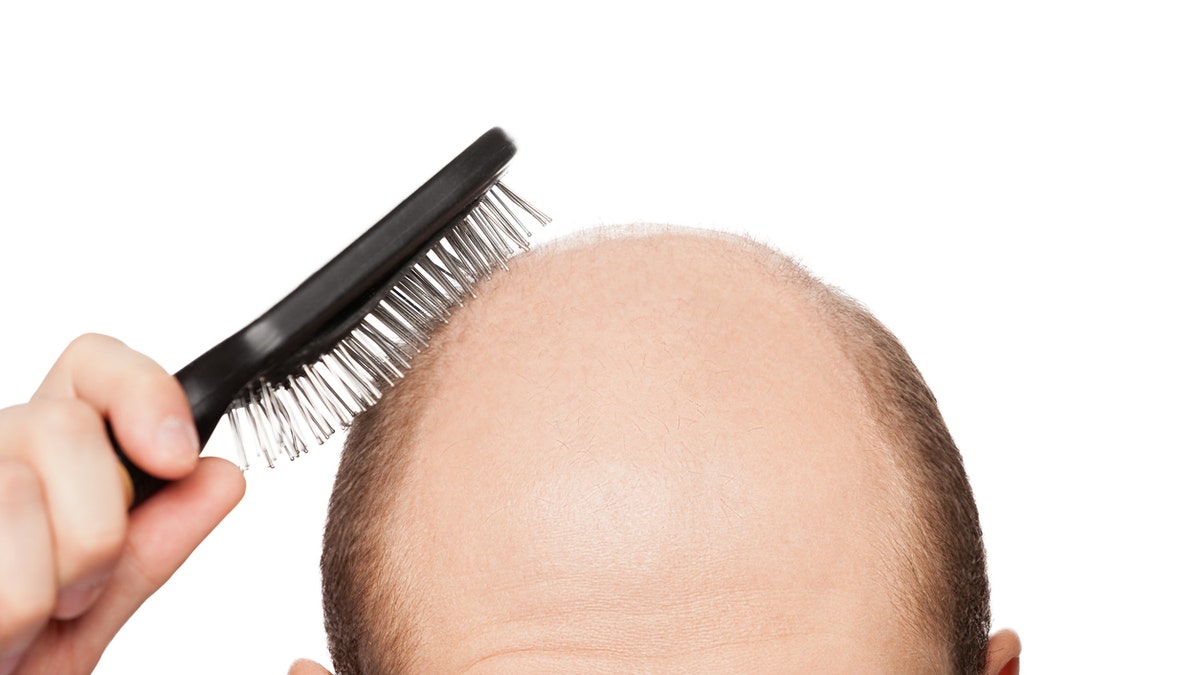
Human alopecia or hair loss - adult man hand holding comb on bald head (iStock)
Losing your hair? You may want to blame your genes: A recent study published in the journal PLOS helped identify over 200 different genetic variants that are associated with hair loss. As part of the study, researchers examined data from over 52,000 male participants ages 40 to 69.
The most common type of hair loss is due to genetics, Dr. Jerry Shapiro, professor in the Ronald O. Perelman Department of Dermatology at NYU Langone Medical Center, told Fox News. (Other, less common causes include vitamin or mineral deficiencies, autoimmune diseases and thyroid problems.
That said, there are a few different ways doctors can help treat hair loss that occurs with age:
1. Topical solutions and foam
Physicians can prescribe a topical solution or foam such as minoxidil, Dr. Shapiro said, which is applied directly to the scalp.
But don’t expect immediate results: “Everyone has to keep in mind that when you’re dealing with hair loss, the hair cycle is slow,” said Dr. Alexis McKee, assistant professor of endocrinology at Saint Louis University School of Medicine. She told Fox News it could take six months or more for hair to grow back.
Side effects of minoxidil may include a dry or itchy scalp, flaking, or skin irritation, according to information from the U.S. National Library of Medicine.
2. Prescription pills
Another option? Doctors may prescribe finasteride, a pill taken once a day, Shapiro said. This treatment, however, comes with side effects as well: One 2015 review in the Journal of Mind and Medical Sciences suggests the drug may be linked with depression and sexual dysfunction.
3. Platelet-rich plasma (PRP)
Doctors may also decide to use platelet-rich plasma (PRP) to combat hair loss. In this procedure, doctors draw blood from a patient, spin it down, take the plasma and platelets, and then inject these into the patient’s scalp, Shapiro said.
Side effects include soreness at the injection site, redness and headache, according to a 2014 study published in the Journal of Cutaneous and Aesthetic Surgery.
4. Hair transplantation
Finally, patients may opt for a hair transplantation, where doctors take strong hair from the back of the head and replace it on top, Dr. Shapiro said. Risks include potential infection and scarring, according to another 2014 study in JCAS.
Of course, if none of these treatments work, it’s not all bad news: Dr. McKee noted that balding men actually have higher dihydrotestosterone (a hormone formed from testosterone) levels than men who are not balding. So, feel free to take balding as a sign of manliness.
